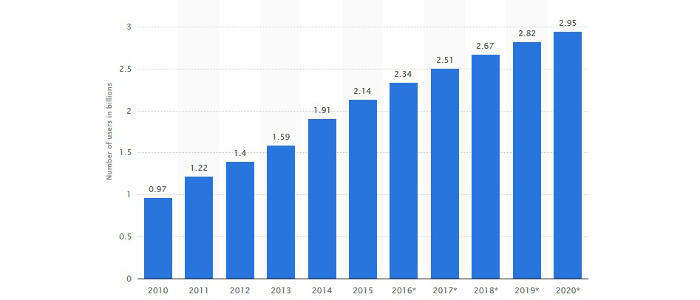Over the last few years the palette of social media platforms has grown more and more diverse and colorful. Everyday content is being shared, liked and commented on a rising number of channels. These channels pose a great, cost efficient opportunity to businesses to engage huge audiences and win over new target groups.
A successful placement on social networks has already helped numerous brands and business to big-time breakthroughs.
While maintaining an active presence on social networks is highly advisable for any kind of business, it is definitely worth taking some time up-front researching each platform’s quirks and features to single out the best suited channels for your own brand.
Each platform got its own dynamics, demographics and thematic focuses. Finding the optimal mix for one’s own social media strategy is the key to minimize resources needed while maximizing reach and marketing effects.
To help you find the ideal social media channels for your brand we profiled the currently most attractive platforms in this market.
With 1.8 bn. active users worldwide (Q4 2016) Facebook is undoubtedly the biggest and most influential social network online. The page that started as a local forum for college students evolved during its 13 years of existence to the number one virtual meeting place. Virtually anyone can network and converse with anybody on this platform.
Individuals and companies alike can stage themselves on their very own profile pages and share thoughts, ideas and news with each other. In so called groups people with similar interests or hobbies can come together and network.
Facebook offers businesses a wide variety of possibilities to engage their target groups, from free-to-use company profiles for posting updates, news and images to payed ad campaigns that come with in-depth data and performance analysis.
With its enormous user numbers, the diverse topical areas and the versatile marketing options, Facebook should be without a doubt one of the cornerstones of every social media strategy, no matter how big your company is or what industry you’re working in.
The whole world in 140 characters – Or something like this could be Twitters slogan. On a daily basis almost 320 million people use the short-messaging service to share news, images, videos or links in posts with 140 characters or less.
Twitter in some way revolutionized the art of condensing complex content into short messages. Furthermore it offers the option to directly address certain users, companies or topics by using the characters “@” and “#”.
Twitter is an amazing tool for quickly spreading interesting and engaging content. If you’re on the other hand just looking to distribute plain marketing material you should maybe refrain from using a corporate Twitter account and concentrate on other channels instead.
„Interaction“ is king on Twitter. That’s what also makes it a great customer service tool. The platform can be used to interact with customers and react to their wishes, needs or complaints. An unsatisfied customer is very likely to address your business via Twitter in one way or the other.
An actively maintained Twitter account can easily become the proverbial gold-mine for a wide variety of market research, marketing and customer retention purposes.
